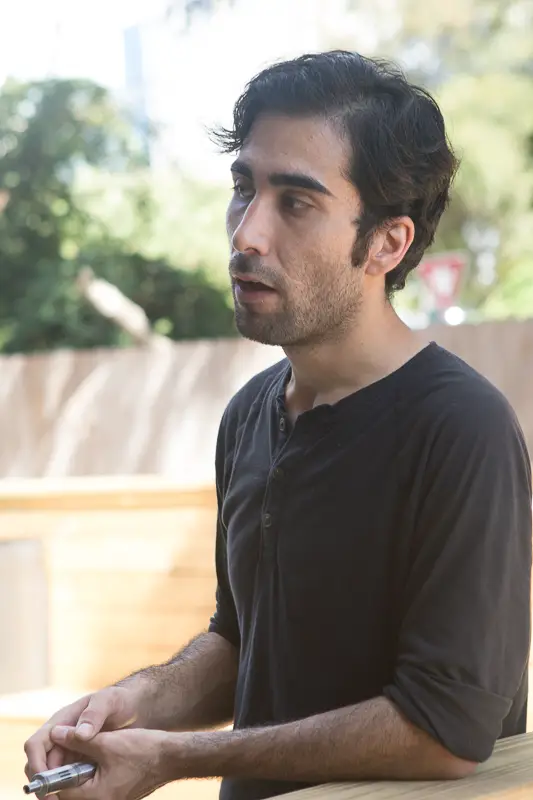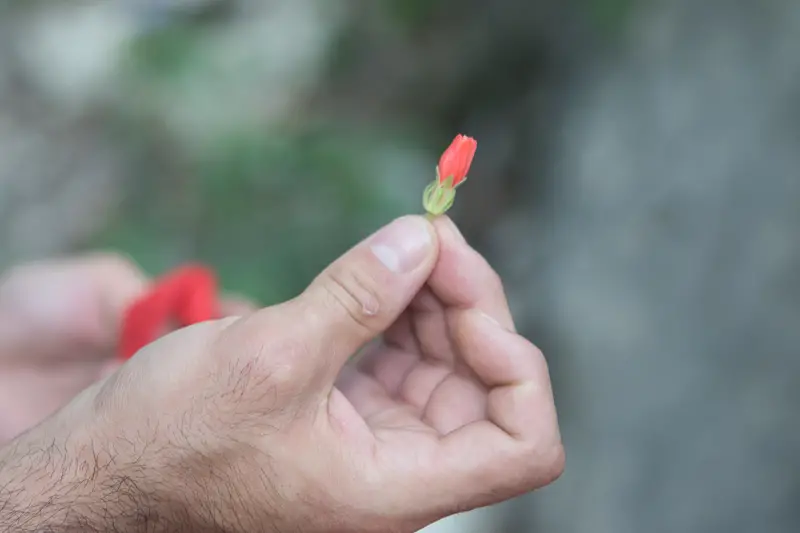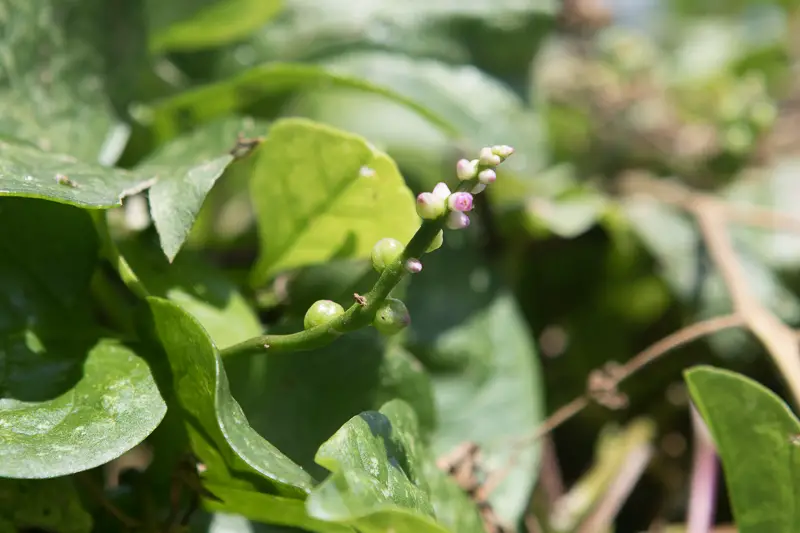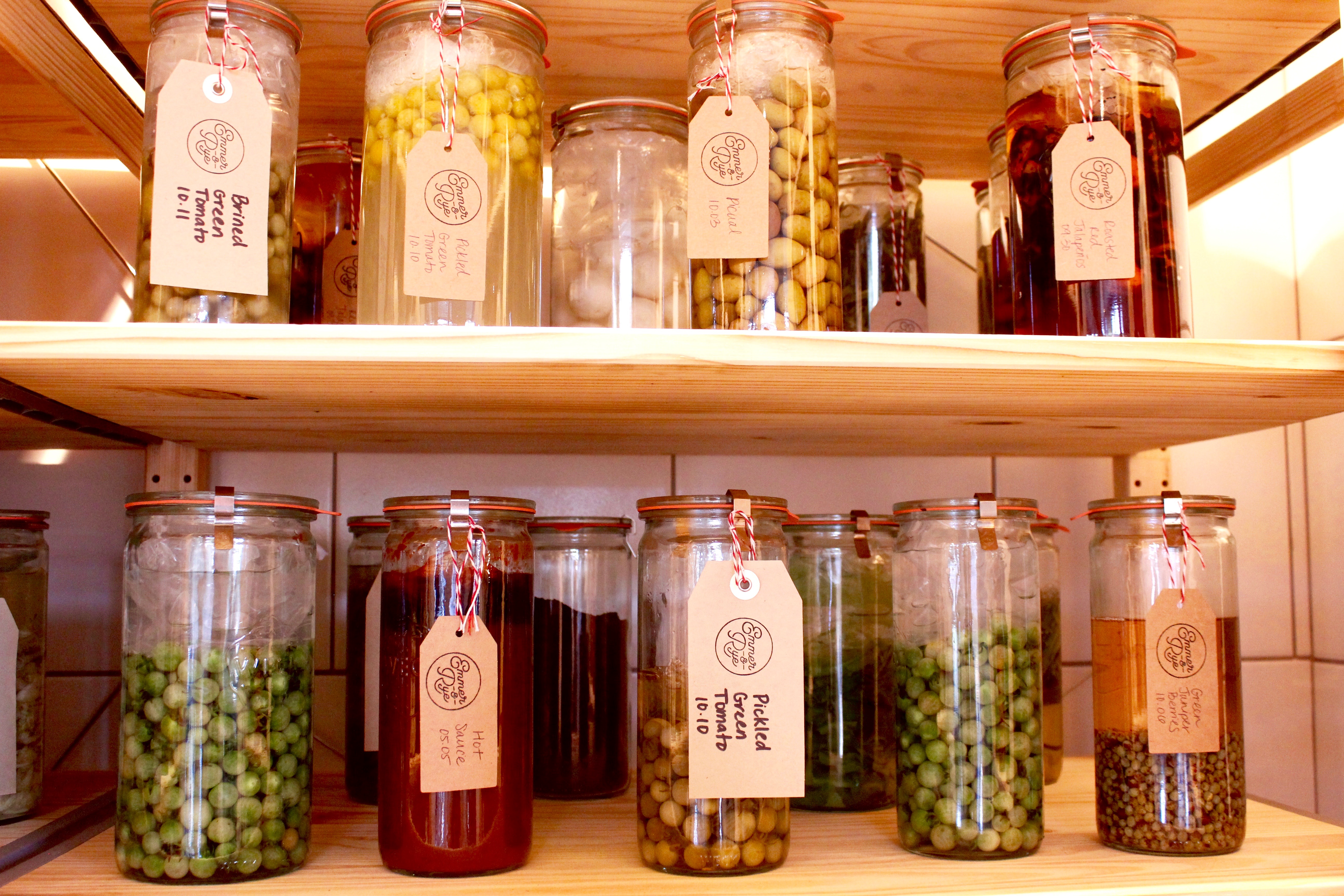Jason White, a 29-year-old chef in Austin, is tall, tan and accidentally handsome, winnowy and taut in the way that only hot hours in cramped kitchens can make you.
He’s also an international pioneer in the trendy new science of culinary fermentation. And although as a cooking method it’s an ancient practice, the science behind fermentation is relatively unexplored. Its ability to create robust, idiosyncratic flavors out of next to nothing, however, has elite kitchens across the world clamoring to change that.

On the muggy August morning we meet, White’s wearing all black and carrying an empty red tote bag around his shoulder. We were going foraging so that he could make a wild vinegar from our findings, despite the fact that White, unlike many modern chefs, typically tries to avoid foraging.
“It’s something that I respect, absolutely, and I think it’s very valuable as far as connecting to the Earth,” White says, “but it’s something I’ve veered away from recently because I’m constantly battling to support urban farmers.”
This kind of perspective is rare. Most chefs wouldn’t consider the impact of their foraging on local farmers, and even if they did, they probably wouldn’t consider that impact negative. But where others see non-relation, White sees interconnectivity. This should come as no surprise, though. In fermentation, White’s specialty after all, nothing is unrelated.
White was raised in Albuquerque, New Mexico, but split his time as a child between living in the city and living with his family in the nearby Sandia mountains. When he was 4 years old, a car hit him. “Ever since then,” he says, smiling,” I’ve had a more open view of the world, a little bit more luminous.”
His family in the mountains lived frugally. There were about 60 people in their community, and many of them didn’t have modern amenities or refrigeration. As a result, they cooked what they could and preserved everything else, often making cheese from their goat and cow milk. These early years with his family in the mountains, the days and weeks he spent running through trees looking for silent spots and living off the land, would go on to later influence White’s relationship with food, nature and farming.
After a few years, his family moved to a morgue that had been converted to a house in Roswell, New Mexico. The building sat in the middle of 100 square acres of land, and had a rodeo arena and ample farmland that they filled with cows, chickens and goats. White hardly saw other people. As a result, he became very connected to the region and its geography, and it was there that he first became interested in the geology and organic structures of the world around him.
His family moved again when White was 11, this time to San Antonio. In the city for the first time, he didn’t adjust well. White dropped out of school in the 8th grade and never went back. From the ages of 12 – 23, he became a self-described “city kid,” roaming the streets and getting into trouble.
He became obsessed with music and audio engineering, and built his own sound studio so he could compose music and write Linux code. “Eventually,” says White, “I got in some trouble and ended up not having the choice of whether or not I could make music. That’s when I started cooking.”
White’s taken me to the western edge of the Greenbelt, a swath of wilderness in south Austin, to forage.
Growing up with New Mexico’s strong Native American influence, White developed an appreciation for foraging and terroir that’s heavily evident in his ferments and affinity for local product.
But unlike many chefs, understanding the anthropology of local food is just as important to White as using it. He rhapsodizes about the differences in food culture between the nomadic and static Native American tribes, the effects of those differences on modern food cultures and how restaurants worldwide are beginning to see anthropology as a critical component of cooking.
In Texas, where local tribes were largely nomadic and the native presence was mostly eradicated, chefs and farmers are forced to either look to Mexican culture for guidance on growing and cooking indigenous foods (not the worst thing in the world), or they have to learn through trial and error.
Though he’s looking for bay laurel, White periodically stops to identify different edible flowers. The bright red beacons of Turk’s Cap crowns guide our path like tiny taillights, but the summer heat has withered them, muting their natural sweetness.

White’s furtively looking for acorns to use for a pet project of his, acorn mochi, but it’s too early in the year. He ends up filling his bag with violet day-flowers, tiny wild sunflowers, handfuls of Turk’s Caps and nature’s very own Red Hots: chile pequin. He picks the Turk’s Caps reluctantly, their ubiquity making them a little old hat for him, but he uses the flower as an example of fermentation’s Midas touch.
“With very little you can produce something extraordinary,” says White. “You can get so many variations from one organic structure. I could make 17 different things out of this one leaf, instead of four things that are all pretty similar.”
“If I were to ferment Turk’s Caps by themselves and didn’t add any leaves, then the flavor would be much sweeter. But say I already had the flower vinegar and then I combined it with the leaf vinegar on a dish, it would be two distinctly different tastes of the same plant.”
The ability of fermentation to create multiple shades of the same flavor is one of the reasons the science is in such high demand, and one of the reasons why White has been asked to stage and teach classes to kitchen staffs throughout Austin, including lauded restaurants like qui and Barley Swine.
Rene Redzepi, the head chef of noma, once famously likened flavors to letters in an alphabet where the dishes are words. The more letters you have at your disposal, Redzepi said, the more beautiful of a word you can create. Through his fermentation, White is essentially giving letters to chefs that no one else has, which is an asset that’s hard to overvalue in the culinary world.
The intricacy of his ferments are astounding, ranging from the recognizable: cured olives, pickled cucumbers and strawberry vinegar, to the unheard of: koji fermented blood-orange kosho; pinto-bean shell kombucha; fermented Hungarian pepper hot sauce; leek scapes in green rhubarb and juniper brine; eggplant fermented in gooseberry husk nuka zuke; quail eggs covered in lactic acid from fermented beets and Swiss chard ash, wrapped in corn husks and Texas salt.
He posts pictures of many of his projects on his Instagram page @TeamSilent, which acts as his virtual resume. He’s amassed a cult following of chefs and journalists from across the country who routinely swap ratios and trade secrets in the comments section, and it was through his Instagram and picturesque experiments that I first stumbled upon White.
But I was neither his first nor his most impactful stalker. Several years ago, a pastry chef at Uchiko in Austin contacted White after he posted a picture of a dayflower vinegar he’d made. The chef said that he liked what White was doing and wanted to experiment with his product.
At the time, White had been working at Koch Ranches, a boutique country store in San Antonio. He had been cooking at several restaurants in the city but had gotten burnt out, and although he went to Koch to get away from cooking, as fate would have it, the store had just gotten a fermentation starter kit.
White’s lifelong interest in chemistry and organics gave him a basic understanding of the science behind fermentation, and he began experimenting with different materials. Soon after the word had spread and lines begun to grow long, Uchiko contacted him.
Since White didn’t have a car, his wife drove to Austin with his jar of vinegar buckled in the passenger seat. The chefs loved it and offered him a chance to stage, chef-speak for “work for free.” For several weeks, White took a Greyhound from San Antonio to Austin to work.
His commute eventually paid off. Uchiko officially hired him as a line cook and unofficially hired him as their chief fermentation expert.
After working at Uchiko for more than a year and a half, White was given the opportunity to stage at the Nordic Food Lab in Copenhagen. And although he has since declined the invitation (there will be nothing rotting in Denmark), the invitation shows the international reach of White’s influence.
In addition to noma, White is working with an El Bulli alum on a highly anticipated project that he’s asked to remain secret, as well as several other projects that he requested remain undisclosed. I can say with impunity, however, that the breadth and scope of these ventures are indicators that Austin might soon be a culinary destination not only nationally, but globally.
Emmer & Rye, the restaurant White helped open in November, will be a large part of that reorientation.
The concept is the brainchild of Kevin Fink, a Thomas Keller trained chef hailing from The French Laundry in Yountville, California.
Among other ambitious goals, the restaurant plans to have a gardening program that uses traditional Korean macrobiotic techniques, in addition to house-milling their own grains for handmade pastas and fermentation projects, as well as offering a dim-sum menu that will allow them the menu flexibility to change offerings as the seasons dictate.
A media dinner that Study Breaks wasn’t invited to provides a glimpse of what that might look like. Fink made a tea scone flour tajarin with hoja santa petals, papalo pesto, Genovese basil and dried shrimp, which at least conceptually, is years ahead of the competition.
The restaurant intends to source what they can locally, including everything they can get from Dorsey Barger and HausBar Farms. In addition to both being Study Breaks’ favorites, Barger and White are also frequent collaborators who feed off each other’s creative vision. White took me to HausBar in east Austin to see the unique way Barger runs her farm, as well as how she and White bounce ideas off each other.
On a tour that may or may not have ended with squirrel-meat tacos, I followed Barger and White as they sampled everything from the hoja santa and papalo that inspired Emmer & Rye’s pasta dish, to pigweed, purslane, amaranth, salad burnet, marigold and a cucumber as sweet as a cantaloupe. One of the keys to Barger’s unrivaled produce is the philosophy behind it.

Instead of just planting what grows, Barger plants what wants to grow. Just because something can grow in a region, doesn’t mean that it’s built to. For instance, during the summer any plants that sport big, leafy greens, such as chard or kale, lose a lot of water to transpiration through their leaves’ large surface area.
On the other hand, native plants, such as lambs quarters, that have evolved in the oppressive Texas heat have naturally smaller leaves. And, as the heat increases, the leaves shrink to conserve even more moisture, which means they take less water to grow and their flavor isn’t negatively impacted by the heat. In other words, not only can plants like lambs quarters, begonia and Malabar spinach grow here, they were built to grow here.
As a result, a lot of the produce growing at Barger’s farm is completely foreign to most people. So, as she and White walk through the calculated chaos that is her garden, Barger points out plants, flowers and leaves that she thinks White could work with, and then lets him taste her suggestions. I watched White’s eyes flutter as he chewed the leaf of a peach tree.
And here’s the real kicker: Since Barger is growing things that no one else grows, and White is fermenting things that no one else ferments, the two combined are responsible for creating flavors that have never really existed before now. Which, as I shouldn’t have to tell you, is very cool.
White is a fermentologist, and so he more than most knows that a good product is the result of not just good ingredients, but good relationships between those ingredients.
He’ll be the first to tell you that his growing renown and his interconnectivity — to farmers, chefs, ideas, ingredients, nature, experience — are far from unrelated. He is constantly seeking and giving advice, helping anyone who wants to listen, collaborating with anyone who has new ideas and sharing his luminous, inspired vision.
“Kitchens need to have more than just the knowledge of farm to table,” says White. “They need to know how farms function, and how kitchens can be inspired by that functionality. Are we only inspired by the whole flower or by the pollen or by the petal? Or does how it’s fermented or the way it grows inspire us, or how the soil’s treated: basically, where do we stop being inspired?”

















[…] gets the support that it needs to open its doors. Chef Sergio Perera and fermentation specialist Jason White are set to open Arrel, a “food innovation hub and collaborative workshop, a gastronomic platform […]